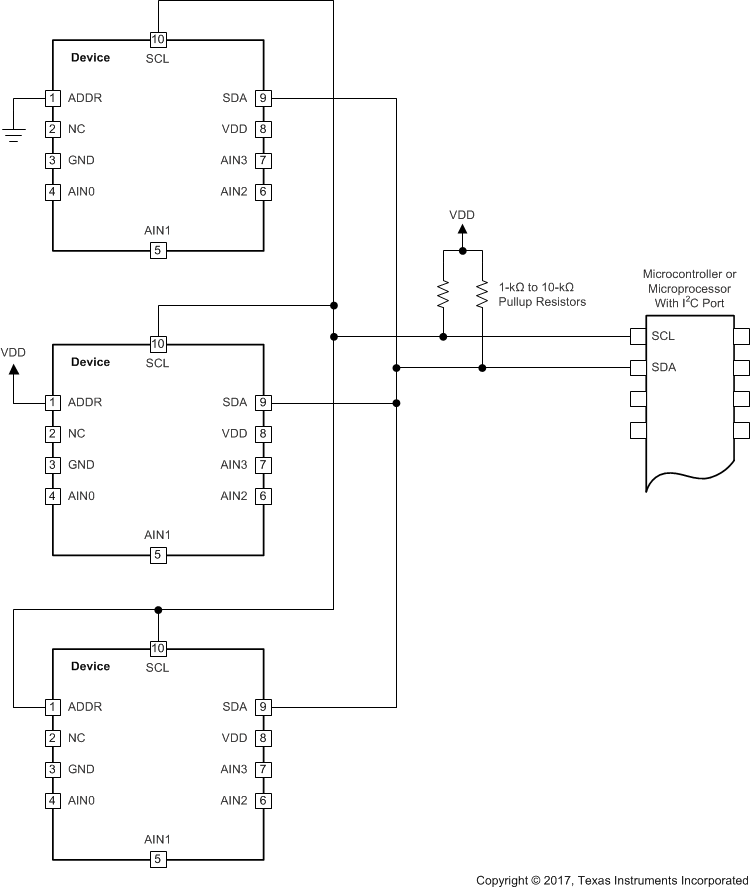ZHCSH32 November 2017 TLA2021 , TLA2022 , TLA2024
PRODUCTION DATA.
- 1 特性
- 2 应用
- 3 说明
- 4 修订历史记录
- 5 Device Comparison Table
- 6 Pin Configuration and Functions
- 7 Specifications
- 8 Detailed Description
- 9 Register Maps
- 10Application and Implementation
- 11Power Supply Recommendations
- 12Layout
- 13器件和文档支持
- 14机械、封装和可订购信息
10.1.2 Connecting Multiple Devices
Up to three TLA202x devices can be connected to a single I2C bus by using different address pin configurations for each device. Use the address pin to set the TLA202x to one of three different I2C addresses. Figure 19 shows an example with three TLA202x devices on the same I2C bus. One set of pullup resistors is required per bus line. The pullup resistor values may need to decrease to compensate for the additional bus capacitance presented by multiple devices and increased line length.

NOTE:
The TLA202x power and input connections are omitted for clarity. The ADDR pin selects the I2C address.